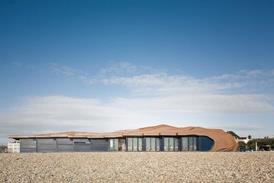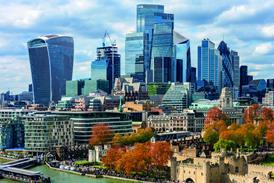The government must get its house in order and act to remove the gateway 2 bottleneck, says Tom Dodson
No one in the industry objects to making buildings safer – the horrors of Grenfell must never be repeated. But there is no doubt that the introduction of the ��Ȧ Safety Act is causing a myriad of unintended consequences along the way towards that worthy goal.

A key part of the act was the introduction of gateway 2 for higher risk buildings – a point before construction starts when the design is scrutinised by the ��Ȧ Safety Regulator (BSR). Intended to take no longer than 12 weeks, this stage would ensure that every new building over 18m high would be as safe as possible against the risks of fire.
What has happened instead is that an underfunded and understaffed BSR has halted building work across the nation – especially in London where a larger proportion of buildings fall into the high-risk category. The harsh reality is that the delay is reportedly taking up to 40 weeks.
>> Also read: ��Ȧ Safety Regulator chief to step down in September
>> Also read: Barely 10% of building safety gateway 2 submissions for new-builds have been approved, latest figures say
One particular refurbishment project that was due to start in September 2025 will now be delayed until September 2026 – unless changes are made.
Refurbishment projects should involve an eight-week application process. In the current system, it is taking up to 16 weeks to even acknowledge an application. Meanwhile, these delays have a devastating knock-on effect on developers and the communities they serve.
Quite rightly, new purpose-built student accommodation is subject to the same safety rules, but in a situation where the UK is short of around 600,000 student bedspaces, delays in getting new accommodation online could quite literally leave first-year students with nowhere to live.
A recent Freedom of Information Act request revealed that 92 major new-build projects are currently on hold pending a decision, new home registrations in London have slumped 38% as a result and the number of build-to-rent homes to reach detailed planning application stage has fallen 41%. While the housing crisis continues unabated, developments are becoming unviable, and there is a real threat that some developers will be unable to survive.
Into this chaos, the government is planning to introduce the building safety levy which considers communal areas and applies to purpose-built student accommodation, build-to-rent, retirement communities and even housing with care facilities.
The gyms, shared workspaces and screening rooms that make apartment living desirable? Taxed. The social spaces that are vital for student wellbeing? Taxed. Old people’s communal lounge for a bit of a get together? You get the picture.
The government needs to get its house in order, starting with the ��Ȧ Safety Regulator. One of the main causes of the long delays is that, the BSR does not employ its own experts, but assembles a bespoke team of outsourced technical staff, such as fire engineers and building inspectors, for each application.
A major recruitment scheme, with high-quality in-house training to gain the necessary qualifications, could help the organisation get on a sure footing.
There’s also the issue that, of the gateway 2 applications so far assessed by the BSR, more than 70% have been invalidated or rejected, with applicants failing to provide the necessary documentation, causing significant delays as a result. The regulator’s solution is to propose being tougher, and reject these applications straight away, rather than working with developers to achieve compliance.
Surely what’s needed here is a carrot rather than a stick? A better system of early checking, more resources for developers and a pre-application engagement system would help applicants to get it right the first time.
While the industry waits for the regulator to deal with the backlog, retrofitting existing buildings for student living continues to offer a viable alternative to new high-rises. However, the impact it has on retrofits and refurbishment is still of concern. For instance, if you are moving or changing any of the fire breaks then you need to apply and will need permission from the BSR.
What is clear is that the latest changes threaten to derail our progress towards building better, greener buildings for communities, and we face a real bottleneck in construction if this continues.
Tom Dodson is chief operations officer at Better Green Living
More on the gateway 2 delays
��Ȧ Safety Regulator considering taking ‘firmer approach’ to bad gateway 2 submissions
What the delays at the ��Ȧ Safety Regulator mean for high-rise development
Homes England boss calls on government to fix ‘unacceptably slow’ gateway 2 approvals
Government exploring ‘all possible options’ to cut gateway 2 building safety delays, says minister























2 Readers' comments